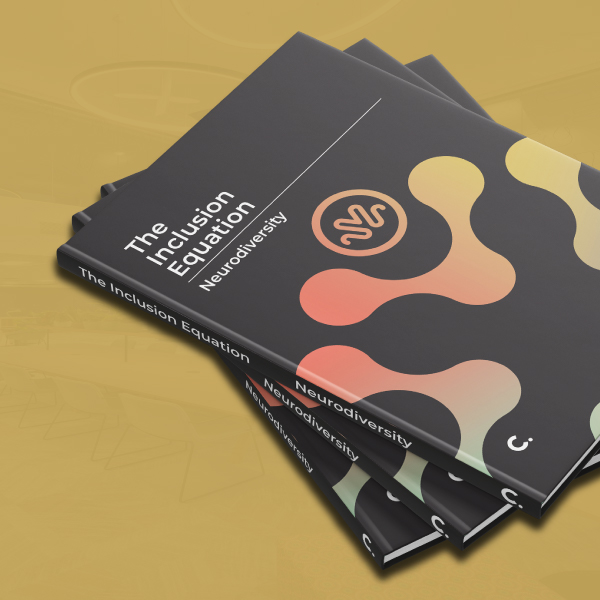
What is neurodiversity? Meaning, Types and Examples
Date
30 April 2024
Read length
5 min
Understanding and embracing neurodiversity is a fundamental step toward fostering an inclusive society that appreciates the vast spectrum of human cognitive abilities. Neurodiversity is not confined to educational institutions or medical frameworks; it’s a concept that enriches our communities, workplaces, and social settings.
Recognising neurodiversity involves acknowledging that the ways in which people perceive, interact with, and interpret the world are diverse and that this diversity is a strength rather than a shortfall. This introductory exploration into neurodiversity aims to shed light on its definitions, the various forms it takes, and the profound impact it has on both individuals and the collective.
What does neurodiversity mean? And what makes someone neurodivergent?
Neurodiversity is a concept that acknowledges the wide range of differences in how people’s brains function and how they behave, recognising these differences as a normal and valuable aspect of human diversity. This term is broad and can include conditions like Autism Spectrum Disorder (ASD), Attention Deficit Hyperactivity Disorder (ADHD), dyslexia, among other neurodevelopmental differences.
Rather than seeing these variations as deficits needing correction, the neurodiversity movement views them as distinct differences that should be understood and supported. This shift in perspective from a deficit-based view to one that values diversity changes how we think about and interact with people who are neurodivergent. Being ‘neurodivergent’ means having a brain that functions in ways that diverge significantly from the dominant societal standards of “normal.”
This inclusive approach to neurodiversity champions the idea that everyone’s brain works differently, and these differences can bring unique skills, perspectives, and talents to the fore. When these attributes are recognised and nurtured, they can significantly enrich our communities and workplaces.
The different types of Neurodiversity
Neurodiversity encompasses a wide array of neurological differences that impact how individuals perceive, interact with, and navigate the world around them. Understanding these variations is key to fostering inclusive environments that celebrate cognitive diversity. Here’s a look at some of the types of neurodiversity, offering examples to illustrate the concept further.
- Autism Spectrum Disorder (ASD): ASD affects communication and behaviour, with symptoms ranging widely among individuals. Some may have significant challenges in social interaction and nonverbal communication, while others might excel in areas like memory, attention to detail, and creative thinking.
- Attention Deficit Hyperactivity Disorder (ADHD): Characterised by patterns of inattention, hyperactivity, and impulsivity that affect day-to-day functioning and development. Individuals with ADHD may struggle with organisational tasks but often show remarkable creativity and problem-solving skills.
- Dyslexia: This learning difference primarily affects reading, writing, and spelling. People with dyslexia might find it challenging to decode words but can excel in lateral thinking, narrative skills, and complex problem-solving. Learn more on ASD
- Dyspraxia (Developmental Coordination Disorder): Dyspraxia impacts physical coordination and can make daily tasks more challenging. However, many with dyspraxia possess strong verbal skills and excel in strategic thinking and creativity.
- Tourette Syndrome: A condition characterised by repetitive, involuntary movements and vocalisations called tics. Despite the challenges of managing tics, individuals with Tourette Syndrome can have exceptional focus in areas of interest and high creativity.
Each of these examples underscores the idea that neurodiversity is not about deficits but about understanding and appreciating the diverse ways brains can function. If you would like to learn more about Autism, ADHD, and Dyslexia in the workplace, you can read our dedicated guide .
Identifying neurodivergent symptoms
Understanding neurodivergent symptoms is key to providing the right support and fostering an inclusive environment . Here are some signs and behaviours that might indicate someone is neurodivergent:
- Difficulty with social interactions: Struggling to understand social cues, maintain eye contact, or navigate conversations can be a sign of neurodiversity, such as ASD.
- Attention and focus challenges: Individuals who find it hard to stay focused, are easily distracted, or overly focused on specific interests might exhibit symptoms associated with ADHD.
- Learning differences: Difficulty with reading, writing, or working with numbers, despite intelligence and effort, could indicate dyslexia or dyscalculia.
- Coordination and motor skills: Clumsiness, poor handwriting, or difficulty with tasks requiring fine motor skills can be signs of dyspraxia.
- Sensory sensitivities: Over- or under-sensitivity to sounds, lights, touch, or smells is common among neurodivergent individuals.
- Inflexible behaviour and routines: A strong preference for predictable routines and challenges with changes can be indicative of neurodiversity.
Recognising these symptoms is the first step towards offering understanding and support. It’s important to approach these signs with empathy, avoiding assumptions about capabilities based solely on neurodivergent traits. Each individual’s experience with neurodivergence is unique, and focusing on strengths while providing support for challenges can lead to positive outcomes for everyone involved.
Embracing Neurodiversity: Towards a More Inclusive Future
Understanding neurodiversity means seeing the unique ways people think, learn, and behave as natural and valuable. It includes conditions like autism, ADHD, and dyslexia. Knowing how to spot signs of being neurodivergent, such as challenges with social skills or focusing, helps us support each other better.
Looking ahead, we must make sure everyone, including those who are neurodivergent, feels valued for their unique skills. Claremont’s whitepaper, “The Inclusion Equation,” is a great resource for learning how to make this happen in workplaces. It shows how valuing neurodiversity leads to more creativity and success.
Discover more in ‘The Inclusion Equation’ by Claremont and see how we can all contribute to a more inclusive world.
FAQs on Neurodiversity
Is dyslexia neurodivergent?
Yes, dyslexia is considered a neurodivergent condition. It’s a specific learning difference that primarily affects reading, writing, and spelling abilities. People with dyslexia process language differently, which can pose challenges in traditional learning settings. However, with the right support, individuals with dyslexia often excel in areas requiring complex problem-solving and creative thinking.
Is OCD neurodivergent?
Obsessive-compulsive disorder (OCD) is typically categorised under mental health conditions rather than neurodivergence. Neurodivergence generally refers to differences in neurological development like ADHD, autism, and dyslexia. However, there’s growing recognition of the neurodiversity within mental health conditions like OCD, emphasising the importance of understanding and accommodating these differences.
Is ADHD neurodivergent?
Yes, ADHD (Attention Deficit Hyperactivity Disorder) is a neurodivergent condition. It involves patterns of inattention, hyperactivity, and impulsivity that differ from the general population’s neurological development. ADHD can present challenges in conventional settings, but it also comes with unique strengths, such as creativity and the ability to think outside the box.
Is neurodiversity a disability?
Neurodiversity itself is not a disability; it’s a perspective that recognizes and values the diversity of human brains and minds. However, certain neurodivergent conditions, such as ADHD and autism, can be considered disabilities in some contexts, especially when they significantly impact daily functioning. The neurodiversity movement advocates for viewing these differences as variations rather than deficits.
What is the opposite of neurodivergent?
The opposite of neurodivergent is neurotypical. Neurotypical individuals have neurological development and functioning that align with societal standards of “normal.” They typically do not experience the same cognitive differences or challenges that neurodivergent individuals do.
Neurodivergent vs. neurotypical: What’s the difference?
The main difference between neurodivergent and neurotypical lies in neurological development and functioning. Neurodivergent individuals have brain functions that diverge significantly from the dominant societal standards of “normal,” often associated with conditions like ASD, ADHD, and dyslexia. Neurotypical individuals, on the other hand, have neurological development that falls within these societal norms, not experiencing the same cognitive differences as those who are neurodivergent.
See how we could help with your new office interior design or office design and build project here
Get in touch
We love nothing better than talking all things workplace and design – got a question, potential project or just need some guidance?
Drop us a note…




